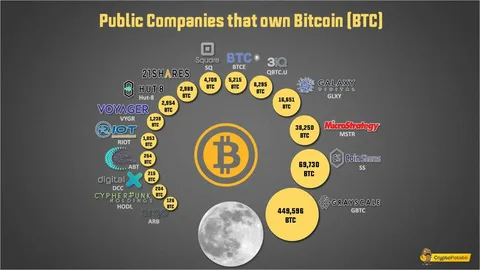Introduction
In recent years, the world has witnessed the meteoric rise of Bitcoin and other cryptocurrencies, sparking widespread debate across industries about digital assets’ role in modern economies. Yet, despite the growing popularity and adoption by major corporations, the Microsoft board’s decision to snub Bitcoin remains an intriguing subject.
Given Microsoft’s innovation-driven brand identity, this move raises essential questions about corporate strategy, risk management, and the broader landscape of cryptocurrency trends. While several major tech players have ventured into cryptocurrency by adding Bitcoin to their balance sheets or facilitating crypto transactions, Microsoft’s board appears to be taking a decidedly cautious stance.
This post will analyze the decision-making framework behind Microsoft’s Bitcoin stance, provide insights into the company’s corporate strategy, and explore what it may mean for cryptocurrency trends in the broader tech and finance sectors. For those tracking Bitcoin’s journey toward mainstream acceptance, Microsoft’s approach offers a fascinating study in corporate strategy, risk assessment, and financial trend forecasting.

1. Understanding the Microsoft Board’s Position on Bitcoin
The Microsoft board’s decision to snub Bitcoin underscores an approach that aligns with the company’s longstanding principles of risk management and fiscal responsibility. Microsoft, as one of the largest and most influential technology firms globally, operates under a rigorous governance model that prioritizes sustained growth and innovation, often tempered by cautious decision-making in areas perceived as volatile or speculative. Bitcoin, for all its appeal, presents certain financial, regulatory, and ethical considerations that may conflict with Microsoft’s established corporate strategy.
In recent years, the Microsoft board has opted to invest in blockchain technology without embracing Bitcoin itself. For instance, the company has developed projects like Azure Blockchain and has explored the use of distributed ledger technologies (DLT) across various sectors. However, Bitcoin itself, with its high price volatility and unclear regulatory status, may have appeared too risky for a firm of Microsoft’s magnitude, known for prioritizing regulatory compliance and long-term stability.
Furthermore, Bitcoin’s environmental impact remains a significant issue for corporations like Microsoft. Bitcoin’s proof-of-work mechanism, which requires extensive computational power, has been widely criticized for its carbon footprint. With Microsoft’s ongoing commitment to sustainability and environmental responsibility, backing a digital asset that requires massive energy consumption may have been viewed as inconsistent with the company’s broader values.
2. Corporate Strategy and Risk Management at Microsoft
The board’s approach to Bitcoin reflects Microsoft’s established corporate strategy, emphasizing sustainable innovation, regulatory compliance, and risk management. Unlike some competitors, Microsoft’s history shows a tendency to avoid financially speculative ventures that could destabilize its core business or conflict with regulatory standards.
Bitcoin’s regulatory landscape is complex and fragmented. Governments worldwide are still grappling with how to classify, tax, and regulate Bitcoin, creating uncertainty for firms like Microsoft. For instance, ongoing debates in the United States around Bitcoin’s classification—whether as a security, currency, or commodity—have created an uncertain regulatory climate. Microsoft’s board, likely concerned about the risks of regulatory backlash, may have opted to avoid the crypto asset to protect the company’s interests.
In this way, the Microsoft board’s decision to snub Bitcoin isn’t merely a rejection of cryptocurrency but an affirmation of its commitment to a corporate strategy focused on stable, well-regulated growth. For a company that manages vast, diversified assets and revenue streams, preserving shareholder value and compliance with global regulations is paramount. Consequently, Bitcoin’s potential for sudden price swings and regulatory crackdowns may have presented risks that the Microsoft board wasn’t willing to accept.
3. The Role of Corporate Image and Public Perception
Microsoft’s corporate image and public perception are also central to understanding its stance on Bitcoin. As one of the most recognizable technology companies worldwide, Microsoft has spent decades building a reputation as a leader in innovation and corporate responsibility. The board’s decision to avoid Bitcoin could reflect concerns about public perception and the potential impact of adopting a controversial asset.
Despite Bitcoin’s growing acceptance, it still faces criticism and scrutiny, particularly from those who view it as a tool for money laundering, fraud, and environmental harm. With concerns surrounding cryptocurrency’s use in illicit activities, Microsoft may have concluded that associating with Bitcoin could harm its reputation and customer trust.
Furthermore, Microsoft has positioned itself as a forward-thinking company, committed to diversity, inclusivity, and environmental responsibility. By steering clear of Bitcoin, the Microsoft board likely aims to maintain this positive image, ensuring that the company aligns with the values its customers and stakeholders prioritize.
4. Future Implications for Microsoft and Cryptocurrency Trends
The Microsoft board’s decision to snub Bitcoin raises essential questions about cryptocurrency trends and the future of digital assets in the corporate world. Microsoft’s approach could set a precedent for other large, risk-averse companies, reinforcing the idea that adopting Bitcoin isn’t a prerequisite for engaging with cryptocurrency or blockchain technology.
Microsoft’s focus on blockchain over Bitcoin may indicate a broader shift within the corporate sector. While Bitcoin remains the most well-known cryptocurrency, blockchain technology presents numerous applications that extend far beyond digital currency. Microsoft’s work on blockchain and distributed ledger projects could lead to breakthroughs in sectors like supply chain management, finance, and even healthcare.
This approach may set a trend where companies separate the technology behind cryptocurrencies from the assets themselves, emphasizing blockchain’s transformative potential without the volatility associated with Bitcoin. If successful, Microsoft’s blockchain initiatives could encourage other corporations to embrace blockchain technology without directly investing in Bitcoin or other volatile cryptocurrencies.
Conclusion
The Microsoft board’s decision to snub Bitcoin is a calculated choice, one that aligns with its strategic priorities and risk-averse corporate philosophy. This decision reflects Microsoft’s cautious approach to financial trends and its commitment to regulatory compliance, environmental sustainability, and corporate reputation. By embracing blockchain technology rather than Bitcoin itself, Microsoft showcases its ability to navigate the complexities of innovation while staying true to its values.
Microsoft’s stance on Bitcoin serves as a reminder that corporate strategy isn’t just about following the latest trends—it’s about carefully assessing risks, opportunities, and long-term impacts. Whether or not other major corporations follow Microsoft’s lead, its approach offers valuable insights into how companies can engage with emerging technologies responsibly.
What are your thoughts on Microsoft’s Bitcoin stance? Share your insights in the comments below!






